|
|
|
|
2001-P Kennedy Half Dollar
w/Heavily Cracked, Convex Reverse
by Ken Potter
© Ken Potter 2008
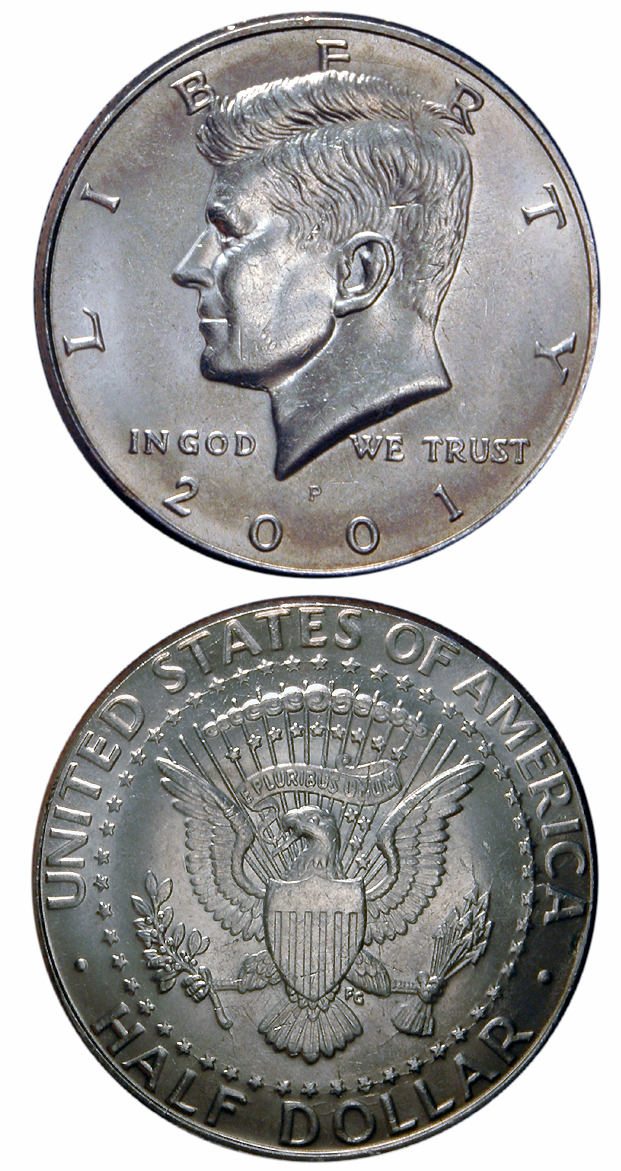
Pepe DeMeo of New York sent in a 2001-P Kennedy
half-dollar with some very interesting effects. While a normal coin has basined
fields so that the central design can be raised up from the recess with some
degree of relief and still be lower than the rims in order to facilitate
protecting the designs for better wearing qualities and stackability, the
reverse of his coin is convex somewhat like a brass button. The area where
it slopes down toward the rim the
fastest begins at the circle of stars -- though the field seems to actually
begin its decent towards the rim much closer to center. Many
of the stars that encircle the central design are connected by die-stress-cracks.
As a result of the convexity, the coin will not lie flat on the reverse rim but
instead teeters on the uneven highpoints of the design upon which it could
actually be spun like a top. For all practical purposes, the obverse is normal.
DeMeo was able to find seven of them out of ten $100 face value bags that he
purchased from the United States Mint website in around July of 2008. He found
four in one bag and one each in three other bags.
In the 30 years that I've been specializing in error and
variety coins, this is the very first example I have seen of a coin with either
the obverse or reverse bearing any kind of convexity of this sort!
So, other than
the obvious fact that the die was breaking up, what does this coin represent? I sent my questions to Sean Moffett
of Moffatt & Company a private mint located in Eureka Springs, Arkansas, and got the following answer:
"The die was on the verge of a massive cud break or total failure. For this convex shape to happen the reverse die would have to be in the collar side of the press. The outside edge of the die had already began to break away and the pieces were probably wedged between the collar and the die, and were not re-seating completely in their original position during coining which would make them higher than the field which would make the edges of the coin seem to fall away which is why the coin appears to be convex.
I have had this happen and either the collar will break allowing the pieces to fall out or the die would finally "explode" and all the pieces would fall out. Both have happened to me. It sounds like a 45 going off when a collar lets loose due to a cud break. The US mint should of have been using a carbide insert collar by 2001, and when the carbide broke it would of shattered into pieces instead of cracking or breaking in to 2 or 3 pieces like a standard collar. The carbide could of have
withstood the wedging of the die pieces longer than a standard collar before breaking, which could account how this piece came into
existence."
Moffatt was Operations Manager for a large private mint (Hoffman Mint) for 19 years where he oversaw the production of over 65 million units per year, until the company was sold and
relocated. He has attended several Mint Directors Conferences and numerous industry events, and he is thoroughly networked in the minting trade.
His educational background includes four years of electronics. He can design, build, and maintain machine and industrial controls.
He has experience as an electrician, machinery rigger / transporter, a haz-mat transport driver, cryogenic filling plant technician, and an electronics technician.
He is proficient with AutoCAD for tooling design, facility design, and plant layouts.
He has the mechanical ability to tear coining presses and support equipment down to the frame and rebuild or repair most all problems in house.
Moffatt is an experienced machinist and builds many of the tooling parts he designs.
He is now President of Moffatt & Co., located in Eureka Springs, AR. The company was founded in October 2007 with former Gallery Mint chief coiner Timohy Grat.
Moffatt & Co. specializes in high speed production of coins & tokens, as well as high end medals in base & precious
medals.
He is in the process of writing a book exploring the mechanical causations of the different types of minting errors.
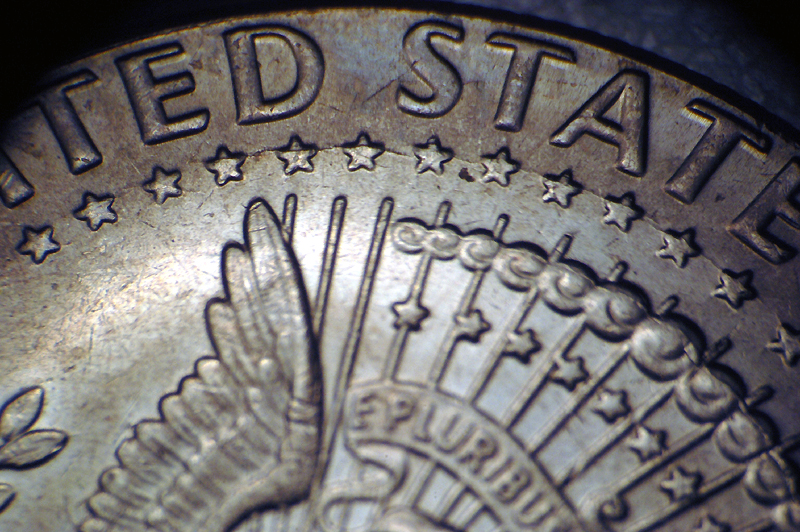
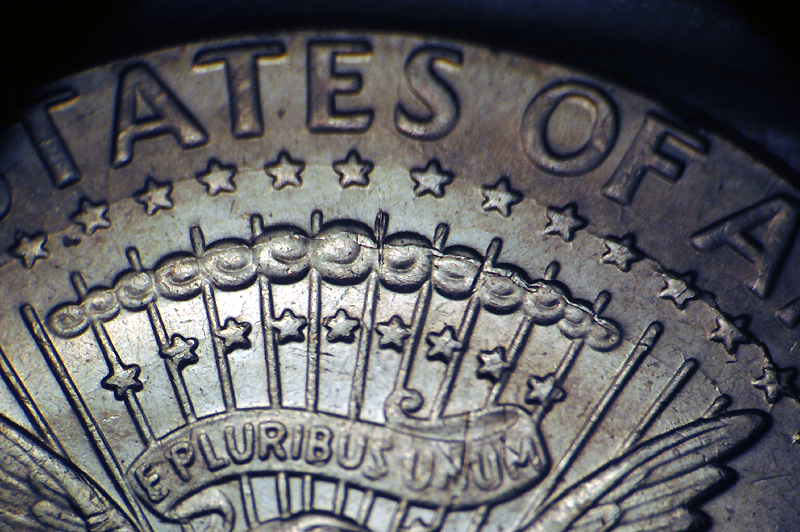
In this photo (and the one above) you can see by the lighting technique used, that the field begins to dip
sharply about
midway into the outer ring of stars. This line of demarcation is aptly defined by the partial circle of die cracks
that connect most of the stars.
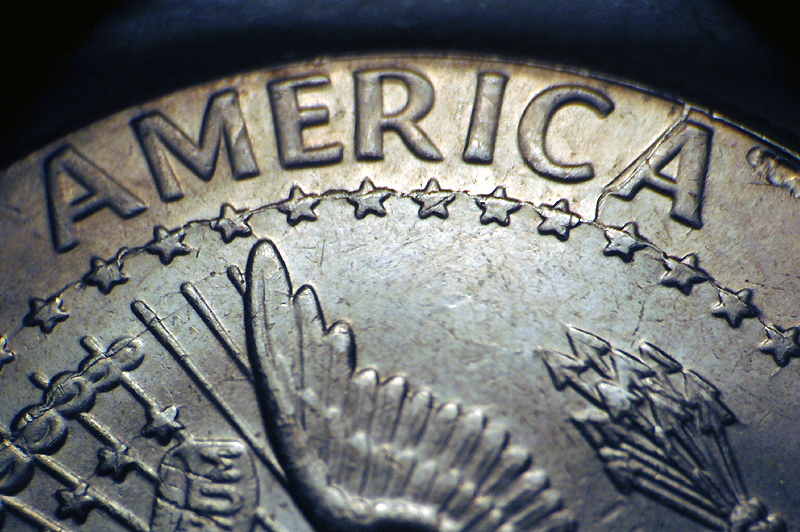
Die cracks run through the circle of stars, up through the left leg of the last
A of AMERICA and through the stars and clouds above EPU.

The die crack running through the L of HALF becomes a bi-level crack when it
enters the rim.
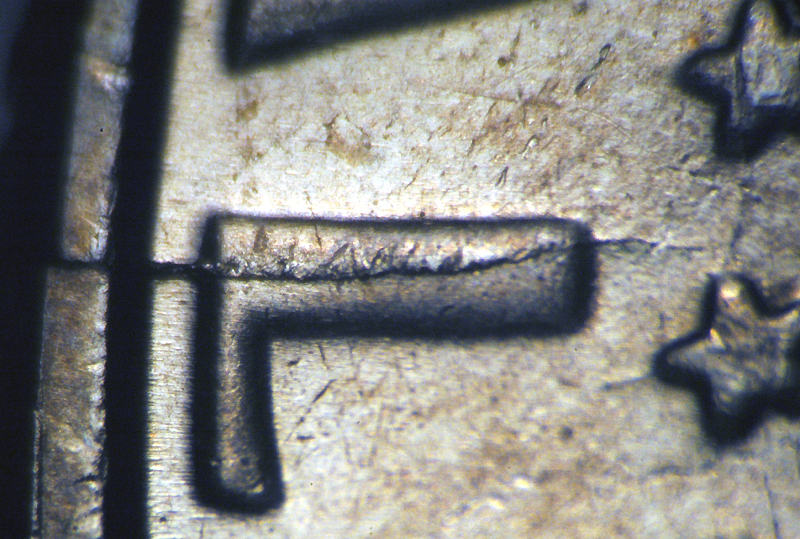

Die cracks are present at the end of the arrows and stem of olive branch.
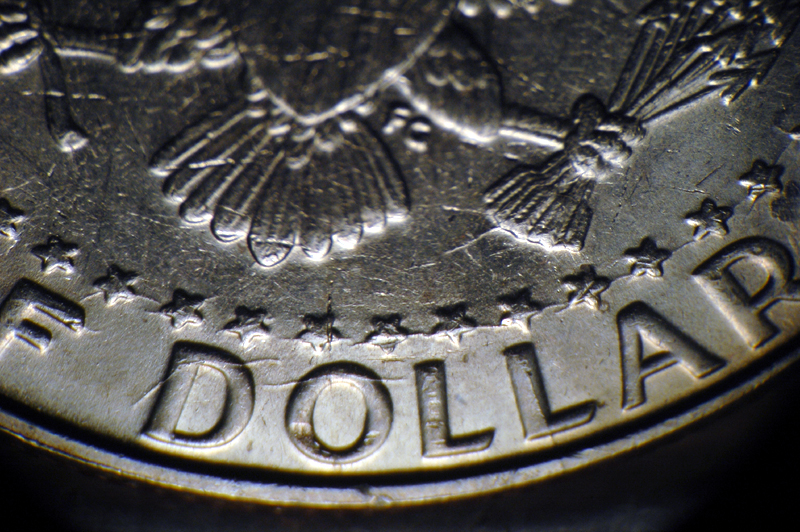
In this view the die cracks through the F of OF and DO and second L of DOLLAR are
shown to best advantage.
The distortion of the sinking die is obviously taking it toll on the die steel.
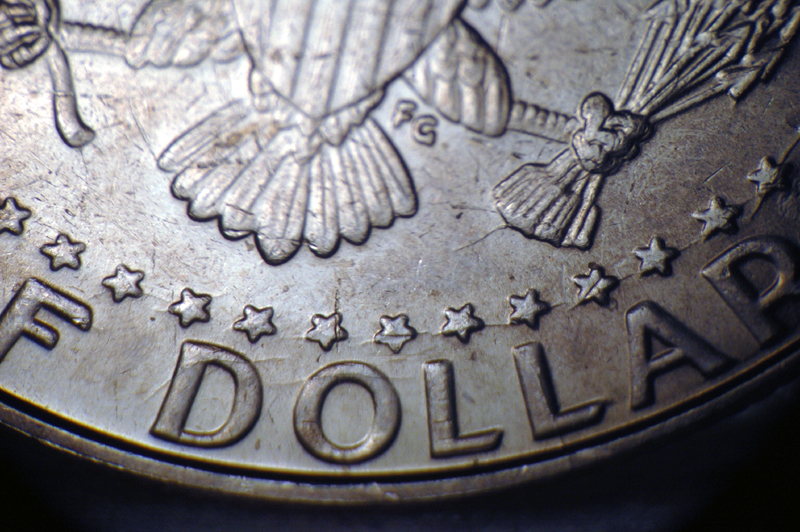
Another view of the above area shot with different lighting.
For more articles on Error-Variety Coins please visit
our:
Educational Image
Gallery